In 2023 Fitch Ratings observed this about the insurance market:
Natural catastrophe business has become largely loss-making in recent years as prices have failed to keep pace with increasingly frequent, severe and volatile weather-related losses due to climate change.
Let's look at what this means for an insurer named Markel. We’ll start with their 2020 annual report and check each one to 2023. Their 2020 annual report contains the frank remark:
First, we’ve significantly reduced writing insurance and reinsurance with exposures to natural catastrophes. We do not know to what extent climate change and other factors have caused insured losses to increase in recent years. Neither can we predict with reasonable assurance what might happen in 2021 and beyond. As such, we’ve reduced our exposures to natural catastrophe-related losses overall. Should such losses strike in 2021 our losses will be less. We’ve not earned adequate returns for the risk and capital charges associated with large property related exposures for several years. We will redeploy the capital previously allocated to this business to higher and better uses within Markel.
Accompanying this is a 2020 PRNewswire announcement that they’re closing their Markel Global Reinsurance property CAT unit. They shifted all such catastrophe reinsurance to wholly owned subsidiary Nephila. Nephila is an interesting beast, touting themselves as “…the first to focus on the convergence of catastrophe reinsurance and weather risk transfer markets with capital markets.” Additionally, they claim to have had “the first climate risk strategy”.
This helps understand a comment in the abovementioned PRNewsire announcement: “This move allows us to more fully leverage Nephila's market leading competitive position while also generating necessary operational efficiencies".
Remember that Nephila is a subsidiary of Markel. Therefore, their operating results are fully captured in those of Markel. We can therefore watch how this situation develops and whether Nephila in fact did evidence a competitive advantage through checking subsequent Markel annual reports. Their 2021 annual report remarks:
The cost of natural catastrophes continues to exceed historical averages. We’ve experienced our share of those high losses in recent years and that shows up in the five-year numbers. We’ve changed the nature and the mix of business we write to lower our exposure to natural catastrophes and 2021 shows encouraging results from our actions.
Later on they remark "2021 was the second largest year for natural catastrophes on record." Continuing this theme, Markel's 2022 annual report remarks:
The ongoing level of higher natural catastrophes experienced over the last several years suggest a new normal level of annual catastrophe losses should be expected.
Continuing,
In the single year of 2022, we earned $627 million of underwriting profits. That is 35% of what we earned in underwriting profits in the last five years. As we’ve discussed in previous years, between the heightened levels of natural catastrophes...we did not always earn what we would consider appropriate underwriting profits relative to the risk insured and capital deployed.
We worked hard to correct that. Where the causes were internal, and in our control, we addressed them. We changed our mix of business by reducing exposures to natural catastrophe risks.
Their latest 2023 annual report states:
We also experienced losses in our insurance results stemming from large-scale natural catastrophes like the wildfires this year in Hawaii. Each year seems to bring a new crop of large-scale insured loss. 2023 was no exception.
As such, after 4 years it does not appear that Markel has found a way to fully protect themselves from natural catastrophe losses. Their 2020 remark about Nephila being especially competitive here also does not appear to hold water.
Let's now look at how entrepreneurs are responding. Spatial Risk Systems (SRS) is a Manhattan spatial finance company. It is run by some of the finance industry’s most experienced professionals. An example is Alex Vengerovsky, the chief scientist in this episode. He has worked at Bridgewater for example. Ray Dalio, founder of Bridgewater, is one of the world’s most successful investors.
Additionally, the CEO Ken Zockoll has more than a decade of experience at FactSet. FactSet is a world leading financial data firm. This experience means SRS has the compliance system knowledge and information management approaches necessary to interface at scale with the finance industry.
This is important because they have developed a geographic information system for this industry that US scores counties, zip codes and census tracts on 4 risk dimensions. These are climate impact, environmental risk, community vulnerability and community resilience. These are also aggregated as an overall risk score. This system can then be used to rate the spatial risk of a given asset, such as by using the footprint of a building.
Consider a publicly traded electricity company. The building footprints of their power plants will be available. They can be used to sample the risk scores at the building locations on these 4 dimensions provided by SRS. Through this, a clearer understanding for investors and insurers can be gained of the risks faced by each power plant in recovering from, for example, an adverse weather event.
Depending on the risk score, the event impact may be increased or reduced. This may be considered from the perspective of "cost, toll, and duration of an event and affect the overall risk to a community or asset" (Spatial Risk Score Methodology). Considering the community vulnerability dimension, if the asset is in a location where this is high then there may be significant challenges in restoring original function after a disaster. The opposite is likely to be true where community vulnerability is low.
Let us return to the Markel example at the beginning. Perhaps the geospatial analytics of Spatial Risk Systems can help Markel understand whether re-enter the natural catastrophe market through better capacity to gauge risk. For more detail, here are some really informative videos on YouTube about what SRS does:
THE GEOSPATIAL INDEX
The Geospatial Index is a comprehensive listing of all publicly traded geospatial businesses worldwide. Why? The industry is growing at ~10% annually. For only $58,000 to start, this growth rate is $5,000,000 over a working life. This channel, Bluesky account, newsletter, watchlist and podcast express the view that you are serious about geospatial if you take the view of an investor, venture capitalist or entrepreneur. You are expected to do your own research. This is not a replacement for that. This is not investment advice. Consider it entertainment.
NOT THE OPINION OF MY EMPLOYER
NOT YOUR FIDUCIARY
NOT INVESTMENT ADVICE
Bluesky: https://bsky.app/profile/geospatialindex.bsky.social
LinkedIn: https://uk.linkedin.com/in/wilfred-waters-902b16217
Watchlist: https://www.tradingview.com/watchlists/123254792/
Newsletter: https://www.geospatial.money/
Podcast:

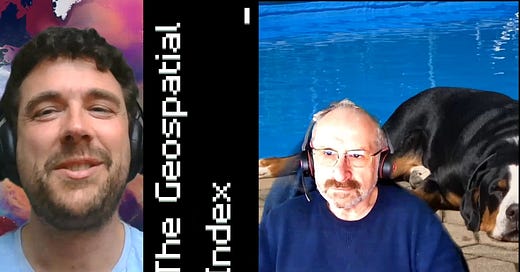



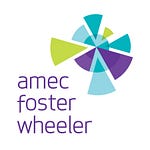

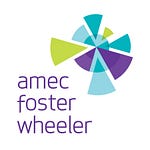
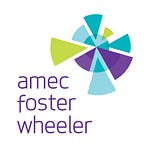
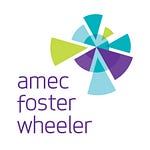
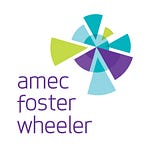
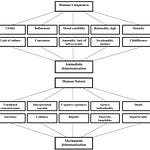

Share this post